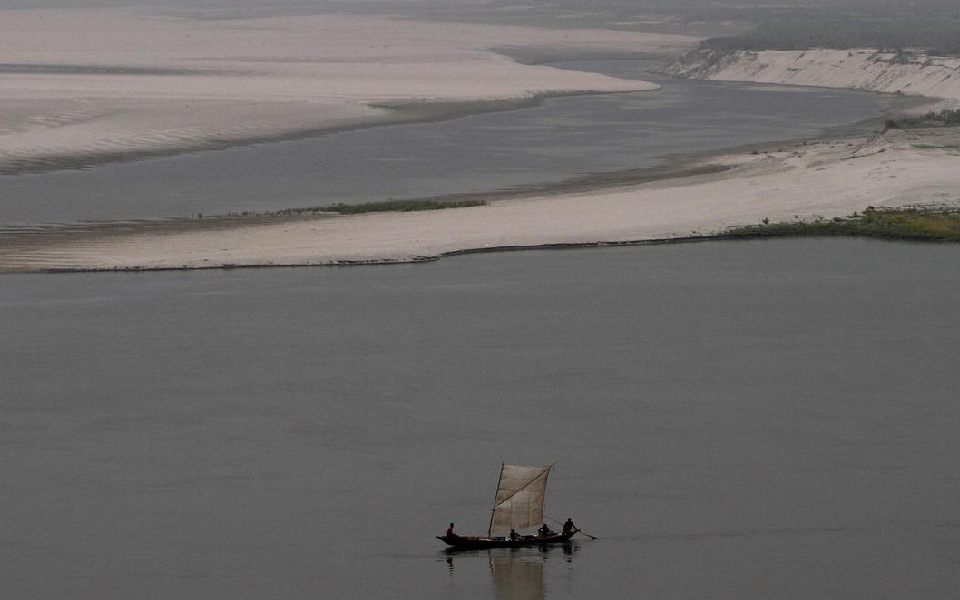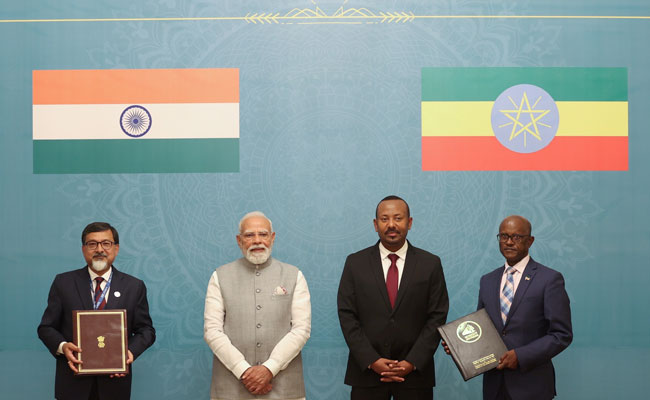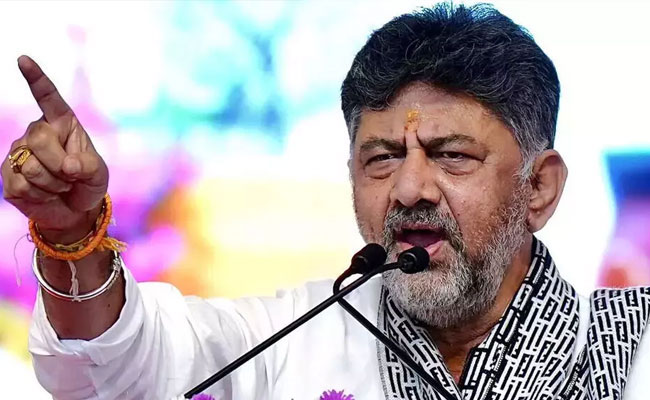Beijing, Dec 26: China has approved the construction of the world's largest dam, stated to be the planet's biggest infra project costing USD 137 billion, on the Brahmaputra River in Tibet close to the Indian border, raising concerns in riparian states - India and Bangladesh.
The Chinese government has approved the construction of a hydropower project in the lower reaches of the Yarlung Zangbo River, the Tibetan name for the Brahmaputra, according to an official statement quoted by state-run Xinhua news agency on Wednesday.
The dam is to be built at a huge gorge in the Himalayan reaches where the Brahmaputra river makes a huge U-turn to flow into Arunachal Pradesh and then to Bangladesh.
The total investment in the dam could exceed one trillion yuan (USD 137 billion), which would dwarf any other single infrastructure project on the planet including China’s own Three Gorges Dam, regarded as the largest in the world, the Hong Kong-based South China Morning Post reported on Thursday.
China has already Operationalised the USD 1.5 billion Zam Hydropower Station, the largest in Tibet in 2015.
The Brahmaputra dam was part of the 14th Five-Year Plan (2021-2025) and National Economic and Social Development and the Long-Range Objectives Through the Year 2035 adopted by Plenum, a key policy body of the ruling Communist Party of China (CPC) in 2020.
Concerns arose in India as the dam besides empowering China to control the water flow, the size and scale of it could also enable Beijing to release large amounts of water flooding border areas in times of hostilities.
India too is building a dam over Brahmaputra in Arunachal Pradesh.
India and China established the Expert Level Mechanism (ELM) in 2006 to discuss various issues related to trans-border rivers under which China provides India with hydrological information on the Brahmaputra river and Sutlej river during the flood seasons.
Data sharing of trans-border rivers figured in the talks between India, China Special Representatives (SRs) for border question, NSA Ajit Doval and Chinese Foreign Minister Wang Yi, held here on December 18.
The SRs “provided positive directions for cross-border cooperation and exchanges" including data sharing on trans-border rivers, a statement by the Ministry of External Affairs said.
The Brahmaputra Dam presents enormous engineering challenges as the project site is located along a tectonic plate boundary where earthquakes occur.
The Tibetan plateau, regarded as the roof of the world, frequently experiences earthquakes as it is located over the tectonic plates.
The official statement on Wednesday sought to allay concerns about earthquakes, saying that the hydropower project is safe and prioritises ecological protection.
Through extensive geological explorations and technical advancements, a solid foundation has been laid for the science-based, secure, and high-quality development of the project, it said.
The Brahmaputra flows across the Tibetan Plateau, carving out the deepest canyon on Earth and covering a staggering vertical difference of 25,154 feet before reaching India, the Post report said.
The dam will be built in one of the rainiest parts of mainland China bringing bountiful flows of water.
According to a 2023 report, the hydropower station is expected to generate more than 300 billion kWh of electricity each year – enough to meet the annual needs of over 300 million people.
In 2020, Yan Zhiyong, then chairman of the state-owned Power Construction Corporation of China, was quoted in the media as saying the location on the Yarlung Tsangpo was one of the most hydropower-rich areas in the world.
“The lower reaches area features a vertical drop of 2,000 metres over a 50km distance, representing nearly 70 million kilowatts of resources that could be developed – that is more than three Three Gorges Dams with an installed capacity of 22.5 million kilowatts,” the Post quoted him as saying.
To harness the hydropower potential of the river, four to six 20km-long tunnels must be drilled through the Namcha Barwa mountain to divert half of the river’s flow at about 2,000 cubic metres per second, according to the report.
Yan said that the hydropower exploitation of the Yarlung Zangbo River downstream is more than a hydropower project.
It is also meaningful for the environment, national security, living standards, energy and international cooperation.
"It is a project for national security, including water resources and domestic security," he said, noting that the project will also smooth cooperation with South Asia.
The hydropower station could generate income of 20 billion yuan (USD three billion) annually for the Tibet Autonomous Region, he said.
An official statement on Wednesday defended the project, saying it will play a positive role in accelerating the country's efforts to create a new development pattern and pursue high-quality development.
It is also of great importance to advancing the country's strategy for carbon peaking and carbon neutrality and to coping with global climate change, it said.
The hydropower project is a green project aimed at promoting low-carbon development. By harnessing the abundant hydropower resources of the Yarlung Zangbo River, the project will also spur the development of solar and wind energy resources in surrounding areas, thus creating a clean energy base featuring a complementary mix of hydro, wind and solar power, it said.
It will directly stimulate the rapid growth of such industries as engineering, logistics and trade services, and create new jobs, it said.
Once completed, the project will further improve infrastructures of electricity, water conservancy and transportation. It will strengthen the synergy of development between Tibet and other regions, it said.
Let the Truth be known. If you read VB and like VB, please be a VB Supporter and Help us deliver the Truth to one and all.
Addis Ababa (PTI): India and Ethiopia on Tuesday elevated their historical ties to a strategic partnership, as Prime Minister Narendra Modi held wide-ranging talks with his Ethiopian counterpart Abiy Ahmed Ali during which they discussed issues of bilateral and mutual interest.
Modi, who arrived here from Jordan on his maiden bilateral visit, was accorded a ceremonial welcome at the National Palace ahead of the bilateral talks, reflecting the vibrant India-Ethiopia relations rooted in shared history and a promising future.
"We are elevating India and Ethiopia relations to a strategic partnership. This step will provide new energy, new momentum and new depth to our ties," Prime Minister Modi said during the delegation-level talks.
He thanked PM Ali for his support in India's fight against terrorism. "The support of friendly countries in this struggle against terrorism holds great significance," Modi said.
"Today, we got the opportunity to deliberate on the key aspects of our cooperation, such as economy, innovation, technology, defence, health, capacity-building and multilateral cooperation. I am pleased that today, we have decided to double the student scholarship for Ethiopia in India," Modi said.
Modi said that India and Ethiopia have shared contact, dialogue, and exchange for thousands of years. The two countries, which are rich in languages and traditions, are symbols of unity in diversity, he added.
"Both countries are democratic powers committed to peace and the welfare of humanity. We are co-travellers and partners of the Global South. On international platforms, we have stood shoulder-to-shoulder," he said.
The two sides signed eight MoUs/agreements, including upgrading ties to 'Strategic Partnership', customs cooperation, establishing data center at the Ethiopian Foreign Ministry, UN Peacekeeping training cooperation, debt restructuring under G20, more ICCR scholarships and AI short courses for Ethiopians, and support for maternal and neonatal healthcare.
Modi said the African Union's headquarters in Ethiopia makes the country a meeting point of African diplomacy. "Inspired by the common vision of an inclusive world, in 2023, India ensured that the African Union became a G20 member," he said.
In 2023, during India’s G20 Presidency, the African Union was admitted as a permanent member of the G20.
Modi said that though this is his first visit, he felt a deep sense of belonging and warmth, reflecting the thousands of years of connection between the two countries.
On his part, Prime Minister Ali said the two countries share over thousands of years of connection through trade, diplomacy, education, culture and even in our food and traditions. "These ties continue to shape a deep friendship, collaboration and mutual respect between our people," he said.
"We also appreciate your consistent message that Africa's priorities must lead the partnership. These kinds of dignified, respectful messages for Africa are very important. Mr Prime Minister, keep pushing. That is the type of message we are expecting from all our trusted friends," Ali said.
He said this aligned fully with Ethiopia's development plan - African-owned, African-led, and African-defined.
"Today, we meet with a clear focus to shape a modern partnership, grounded in sovereignty, self-reliance and practical cooperation. Our cooperation is rooted in equality and South-South solidarity," he said.
"Our economy is performing strongly. Last year, we grew 9.2% and this year we are expecting 10.3% GDP growth. Besides GDP growth, our FDI inflow is also rising big time. India is the leading source for our FDI," he said.
"We have more than 615 Indian companies which are investing in Ethiopia. This all gives our cooperation a strong foundation of trust. I think our decision today that we elevate our historic relationship to a strategic relationship is the right decision," he added.
Ethiopia also conferred its highest award - The Great Honour Nishan of Ethiopia - on PM Modi. He is the first global head of state to receive this award.
Prime Minister Modi also went to the Friendship Park and Friendship Square in Addis Ababa with PM Ali.
In a warm and special gesture, PM Modi was earlier received by his Ethiopian counterpart at the airport and accorded a warm and colourful welcome.
"Ethiopia is a nation with great history and vibrant culture," Modi said.
PM Ali informed his Indian counterpart about the varieties of Ethiopian coffee during informal talks.
"At Addis Ababa airport, took part in a traditional Coffee Ceremony with Prime Minister Abiy Ahmed Ali. The ceremony beautifully highlights Ethiopia’s rich heritage," Modi said.
In a unique gesture, the Ethiopian Prime Minister drove Modi to the hotel.
On the way, he took a special initiative of taking PM Modi to the Science Museum and Friendship Park, which was not in the itinerary.
"Gratitude to Prime Minister Abiy Ahmed Ali for showing me glimpses of Ethiopian history and culture at the National Palace Museum in Addis Ababa. It was a powerful reminder of Ethiopia’s rich traditions," Modi said in a post on X.
The Nobel Peace Prize-winning Ethiopian PM’s special gestures show remarkable respect for Modi, sources said.
"Thank you Ethiopia for a welcome that was unforgettable. The Indian community showed remarkable warmth and affection. India-Ethiopia friendship is going to get even more robust in the times to come," Modi said.
When Modi arrived at the hotel, he was warmly welcomed by the members of the Indian community. Local artists performed dances. Some of them danced on the theme of the popular Hindi song 'Aisa Des Hai Mera' to welcome him.
On Wednesday, Modi will address the Joint Session of Parliament and share his thoughts on India's journey as the "Mother of Democracy" and the value that the India-Ethiopia partnership can bring to the Global South.
PM Modi arrived in Ethiopia from Jordan, where he held a one-on-one meeting with King Abdullah II at the Husseiniya Palace on Monday before the delegation-level talks.
India and Jordan also inked MoUs in the fields of culture, renewable energy, water management, digital public infrastructure and twinning arrangement between Petra and Ellora, aimed at giving a major boost to bilateral ties and friendship.
From Ethiopia, Modi will visit Oman on the final leg of this three-nation tour.





